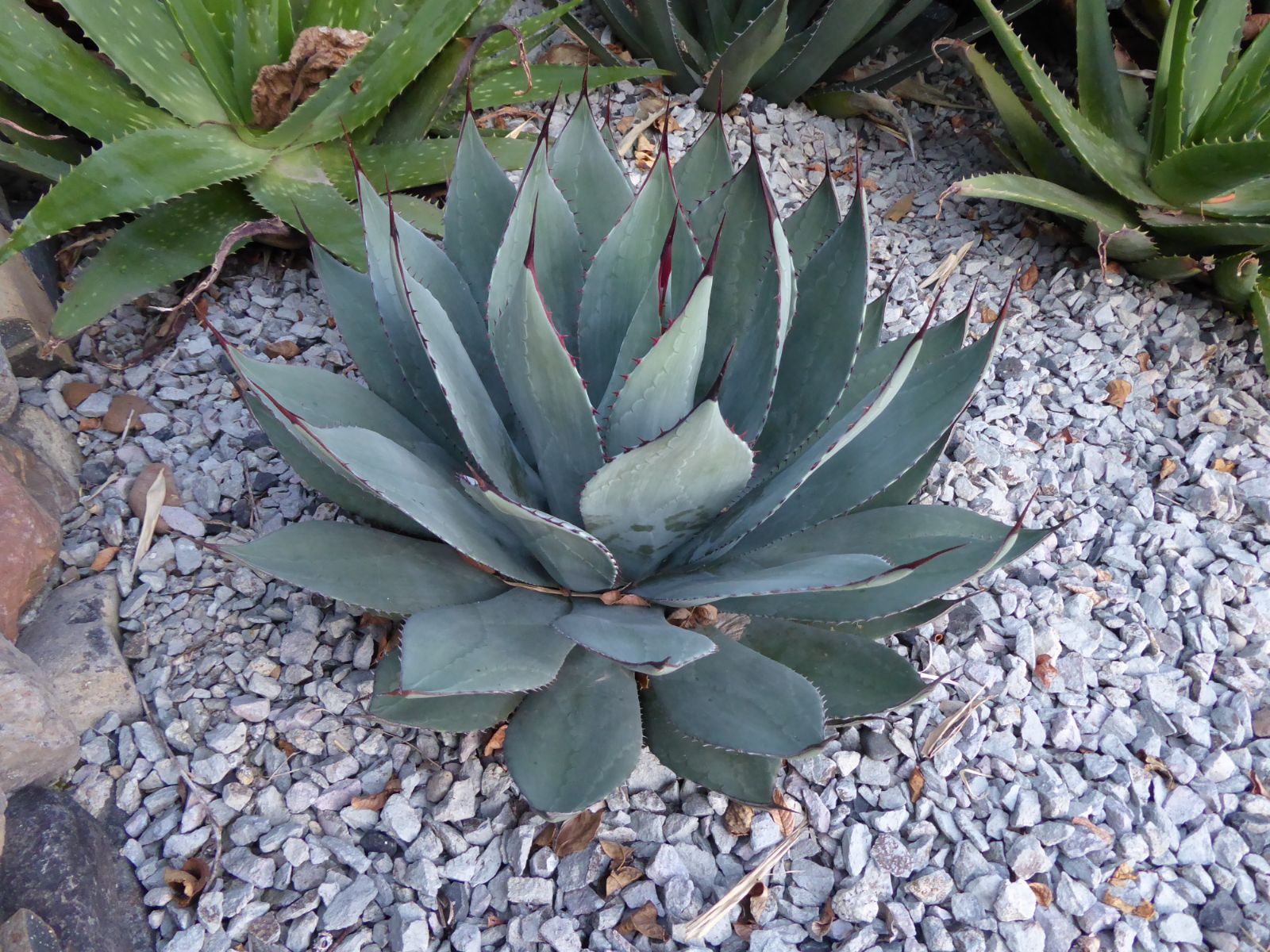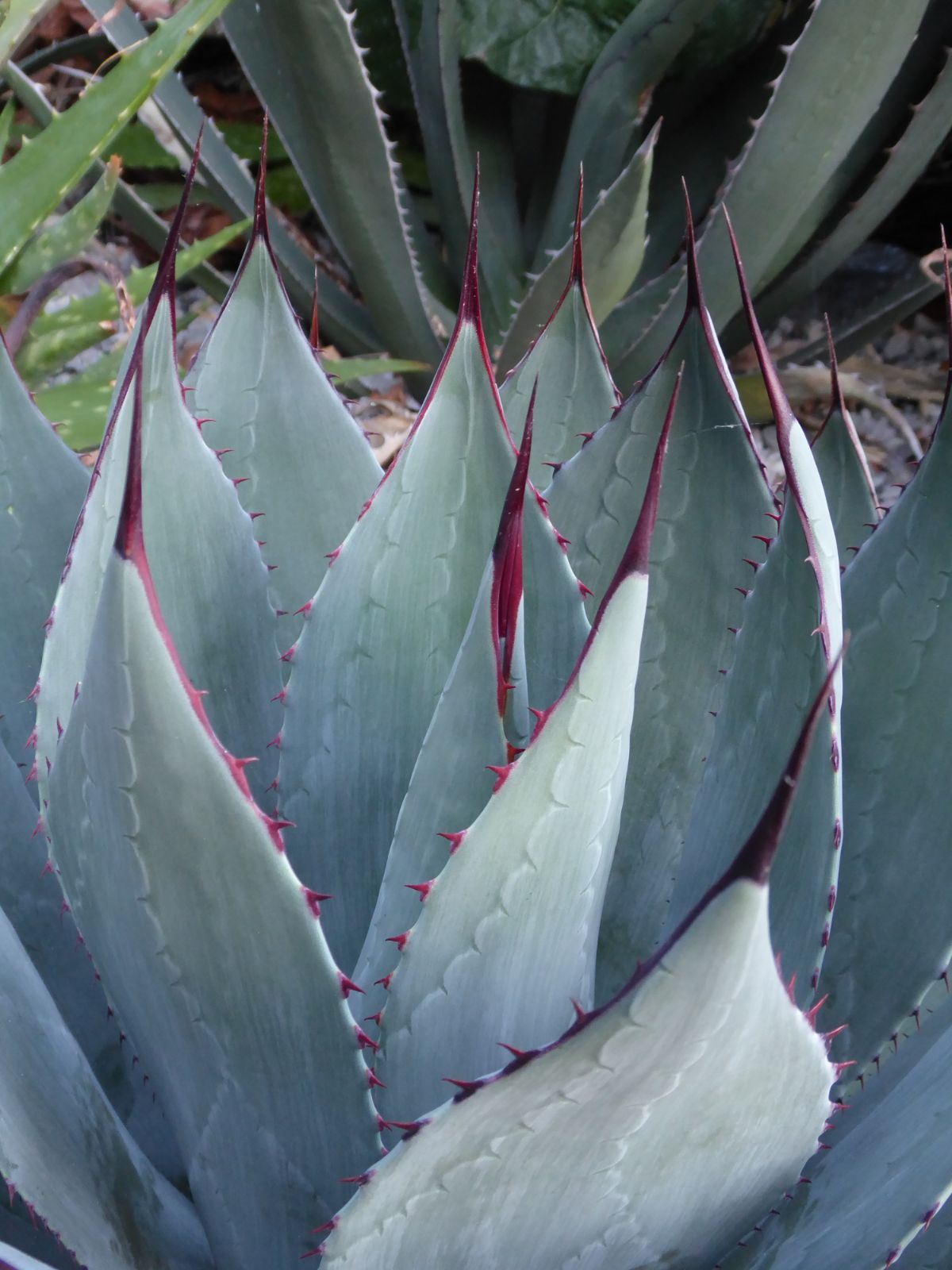Agave parryi
Credits
Article from Bean's Trees and Shrubs Hardy in the British Isles
Recommended citation
'Agave parryi' from the website Trees and Shrubs Online (treesandshrubsonline.
Genus
A stemless succulent plant, consisting mainly of a rosette of thick fleshy leaves usually 10 to 12 in. long, 3 to 4 in. wide, dull grey-green, glaucous when young, narrowing to a very stout black spine which is about 1 in. long and flattened or even grooved above. The horny margins are set, at 1⁄2 to 1 in. apart, with small, narrowly triangular, often hooked teeth 1⁄8 to 1⁄5 in. long. Inflorescence perfectly erect, 8 to 12 ft high, the stem 21⁄2 in. in diameter at the base, the flowers themselves being borne, candelabrum fashion, in a panicle at the top 3 ft long and 1 ft wide. Each flower is creamy white, about 2 in. long, the lower half consisting of the slender, spindle-shaped ovary, the upper half of the six-lobed perianth whose lobes are erect. Stamens conspicuously exserted, being about 11⁄2 in. long and bearing anthers 5⁄8 in. long.
Native of the W. United States from N. Arizona to S.E. New Mexico; also found in Chihuahua, Mexico; first collected in 1846, but introduced to cultivation in 1868 by C. C. Parry, who gathered seeds which were distributed under the present name. It proved quite hardy at Kew on a wall of the old T-range, but went when this was demolished. A sucker from the original plant is now grown under glass. E. A. Bowles had a plant in the open air at Myddleton House, Waltham Cross, for over thirty years. The plant can, of course, be recommended only to lovers of curiosities and as probably the hardiest species of a distinct and well-marked genus.



